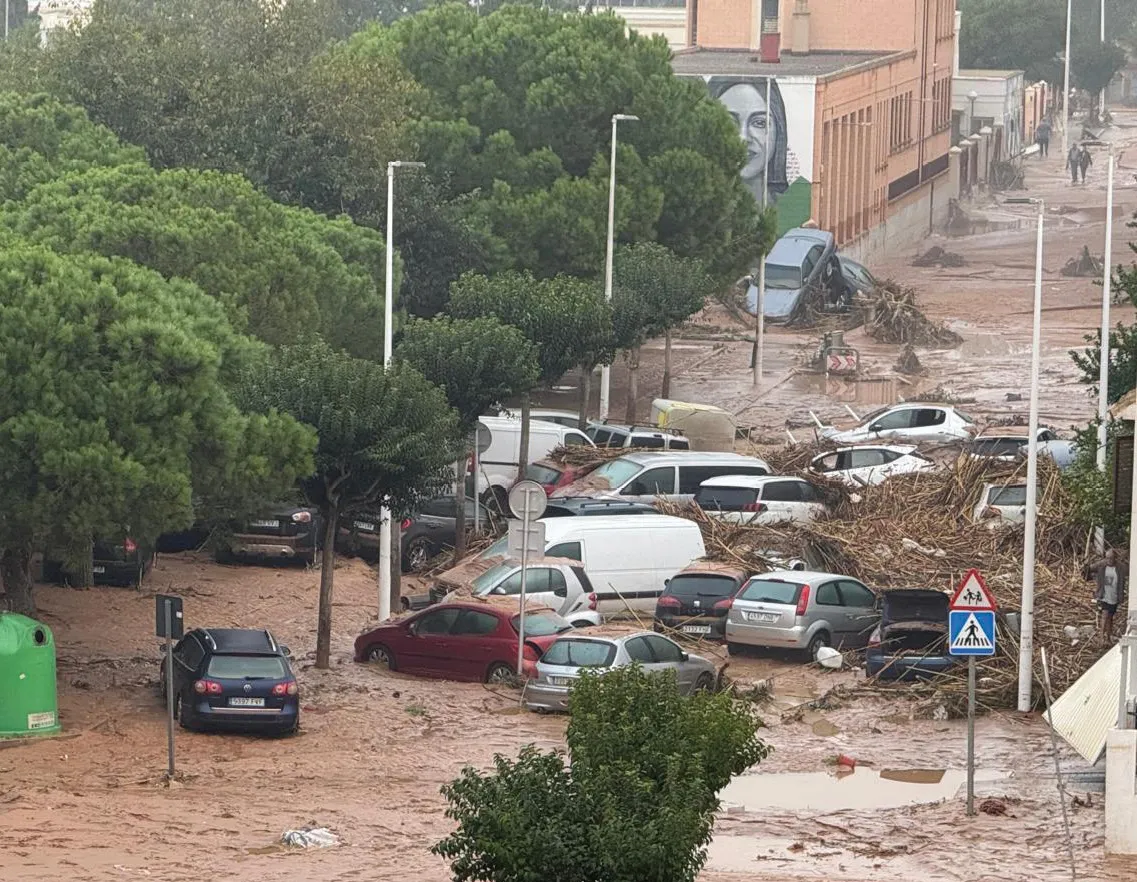Nov. 5—The Spanish Royals were assaulted by the angry local population when they visited Valencia, Spain, Nov. 3, four days after floods devastated the region. The death count from the disaster is up to 217, and rising, and hundreds of people are still missing. People threw mud balls at King Felipe VI, and someone took a stick to Prime Minister Pedro Sánchez.
Their rage is justified. Not only could the heavy toll of human lives, and destruction have been avoided, if the authorities had sounded the alarm in a timely way, but the flooding itself might have been vastly lessened, or even prevented, had local and national authorities invested in traditional water-management and flood-control infrastructure—dams, levees, retention basins, etc.—in recent decades. In addition, aid from government authorities was slow and insufficient.
The people’s rage is motivated by the absence of government help before, during, and after the flood, which had been forecast by meteorologists. At one point 170,000 people were displaced, 50,000 were without electricity, and 350,000 without water. Despite meteorologists’ early warnings that an extreme rainstorm was coming, the local government did not tell people to stay home or take other measures, early on. Thousands of cars were slammed off the road; some people drowned in underground parking lots. There were many ground-floor deaths, including seven people at one nursing home.
Right off the mark, the Green vulture mainstream media and politicians declared the disaster to be the inevitable result of lack of sufficient response to mitigate “climate change.” The BBC on Oct. 31, wrote, “In a preliminary report, World Weather Attribution (WWA), a group of international scientists who investigate global warming’s role in extreme weather, found that the rainfall which struck Spain was 12% heavier due to climate change and that the weather event experienced was twice as likely.” The WWA, based in Britain, is a media-control operation, enforcing the climate-change narrative.
However, in reality, Madrid has been wasting resources in the cultish attempt to lessen climate change, all the while not building and maintaining flood defenses. This is the main factor causing flood damage.
Over recent decades, Spain has invested tens of billions of euros in so-called climate-mitigation policies that have weakened existing flood-prevention measures. One billion euros was spent to meet the targets of the 1997 Kyoto Protocol; 50 billion euros to reach the 20-20-20 target (20% less CO2 emission, 20% “renewables,” 20% more efficiency) set by the European Union; and 240 billion euros to reach the targets of the 2015 Paris Agreement.
Wasted money. The waste comes in two respects: the attempts to lessen emissions and to further biodiversity, otherwise called “re-naturization” in the European Union parlance. The climate is not like a giant refrigerator, in which you can turn the thermostat on and off (as pointed out by Italian Prof. Franco Battaglia). E-cars and solar panels have no effect on global climate. Worse: Evidence shows that in Valencia province, as in other regions, the money was spent on “restoring nature”—riverine projects that weakened infrastructure, or even prevented new infrastructure, for flood control.
Valencia Flooding—A Known Threat

Valencia is on the eastern coast of the Iberian Peninsula, on the Balearic Sea, of the Mediterranean. With 840,000 people, it is the third-largest city in Spain. The Turia River discharges into the sea here, after rising 170 miles upriver in the Montes Universales, in the mountains of the northwesternmost end of the Sistema Iberico.
A large number of floods have been recorded in Valencia, from 1321 to 1897; up to 75 major floods are estimated to have taken place in the seven centuries prior to the October 14, 1957 flood, which was extreme. It is still remembered as the “Gran Riada de Valencia”—the Great Flood of Valencia. It caused an official death toll of 81, and unofficially, a reported 300 deaths. Destruction was vast.
After the 1957 flood, authorities decided to divert the Turia River from flowing through the city center, so that it would no longer constitute such a threat to Valencia. A new riverbed was built south of the city. It was completed by 1969, successfully providing protection. However, in the following years, authorities permitted more and more urbanization of those areas at the southern periphery of Valencia, which were part of the flood retention basin, thus increasing vulnerability again.






